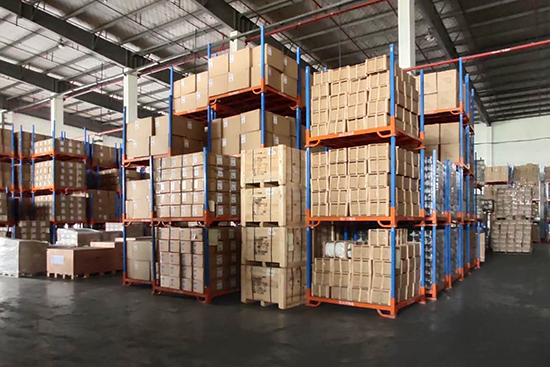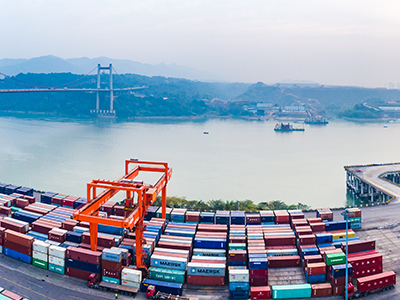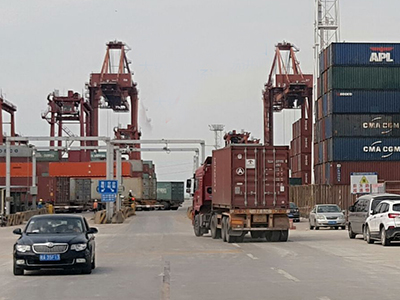Today, CNS mainly tells you about the power of transportation management in E-Commerce Parcel Shipping. Companies racing to leverage e-commerce opportunities may suddenly find themselves shipping internationally – and at high volumes.

To do so successfully means simultaneously:
Juggling multiple carriers and services
Quickly synthesizing shipping data from disparate sources
Managing increasingly complex cross-border documentation
Monitoring parcel delivery events worldwide, and accelerating the speed at which these events are communicated to customers
This is no easy feat – although e-commerce creates seemingly infinite sales opportunities, it also introduces new pressures that many organizations aren’t equipped to handle.
Speed is the New Currency
Customers have been conditioned by popular e-tailers such as Amazon and Alibaba to expect same-day/next day delivery. And it doesn’t seem likely these expectations will lessen any time soon. On the contrary, they may actually increase.
In its 2018 Global Consumer Insights Survey, PwC asked approximately 22,000 shoppers worldwide to weigh in on their shipping preferences – from deliveries to returns.
Survey results revealed for one-third of those Amazon customers who use the company’s Prime service, the most important benefit cited was unlimited free delivery (mentioned by 72% of Prime users), and one-quarter of Prime users say they prize Prime’s free two-hour delivery option as well.
Shipping Parcels Globally Creates a Complex Logistics Ecosystem
While geographic boundaries may have shrunk, crossing these boundaries requires shippers to navigate a labyrinth of local couriers, paperwork, tariffs, and customs – and if a shipment includes a high value or hazardous item, the process is even more elaborate.
Add consumer expectations for same-day/next day delivery to the mix, and organizations are suddenly under tremendous pressure to flawlessly navigate cross-border shipping while eliminating any chance of a shipment being held up at customs.
Customer Expectations
Customer expectations are high and evolving, created and re-created daily as they encounter highly satisfying experiences from product discovery to product delivery. According to a new report from project44, 85% of marketers now say delivery is moderately to very important to their brand and customer experience.
Omnichannel Complications
Omnichannel order fulfillment complicates parcel shipping workstreams, as companies move inventory from distribution center (DC) to store, from store to store, from store to consumer, from DC to consumer, and more – all in parallel. While omnichannel distribution can improve sales, customer service, merchandising initiatives, and more if implemented effectively, there are disadvantages.
For example, using retail stores as fulfillment centers can create major challenges for in-store productivity/profitability, customer service, and staff retention, and as retailers decentralize shipping operations and access inventory in stores, this creates “order fragmentation” and increases costs.
Siloed Operations
Transportation teams often operate in a silo, and decision making becomes flawed. While larger organizations may be disciplined with data strategies and use of business intelligence, small organizations may be so focused on buzz words like ‘big data’ that they have overlooked the importance of ‘right data.’ Management may not fully realize the value of business intelligence, or they may feel overwhelmed when they understand they lack key informational insights or have data trapped in silos.
With all of these pressures, it’s no wonder organizations struggle to seamlessly execute end-to-end e-commerce shipping. And as long as shipping processes remain manual and disconnected from larger enterprise systems, shipping data will continue to be siloed and leadership will be left flying blind—with no way to plan, execute, and measure their parcel shipping operations at a strategic level.
While it may feel like a daunting task, getting up to speed – and continuing to maintain pace – with the e-commerce market is no longer optional. Fueled by mobile, which saw sales increase 55% in a year, eCommerce in North America grew by 16% in 2018 to over $500 billion. The urgency and the opportunity to work differently has arrived.
What Not to Do
Many organizations are acutely aware of the pressures that come with e-commerce parcel shipping, but their attempts to address it continue to be tactical, rather than strategic. They roll out various productivity initiatives in the warehouse, they increase the number of carrier workstations on the warehouse floor, or they retrofit existing platforms – all the while thinking, “Well, this has worked for us before.”
These initiatives inevitably fail because the tools and technology weren’t built for the demands of e-commerce order fulfillment and the reality of how people and companies must work in today’s shipping environment. In the world of modern shipping, surviving and thriving requires bold, new steps.
CNS cross-border E-commerce logistics aims to provide multinational e-commerce operators with logistics distribution services for the European Union, North America, Mexico, South America and Australia.Main amazon FBA door-to-door transportation (including sea and air transportation), FBA express and FBA related supporting services, etc., providing convenient and safe logistics solutions for cross-border e-commerce, with professional international logistics experience.















